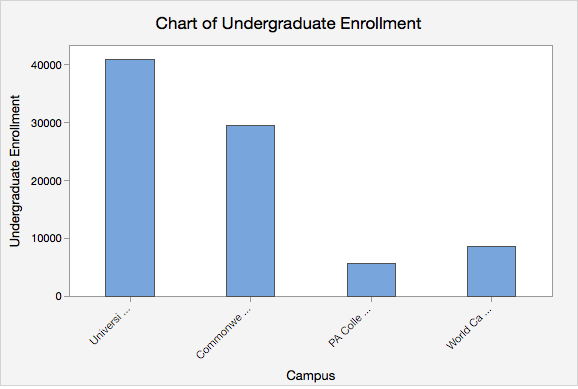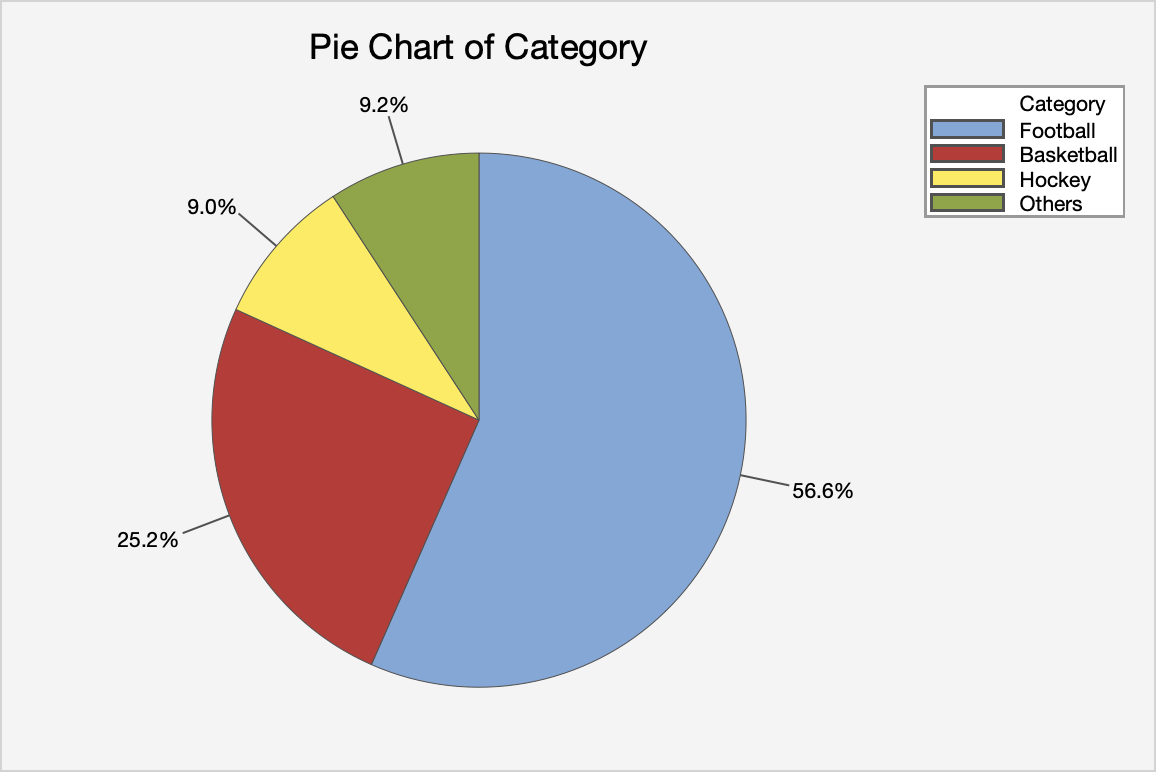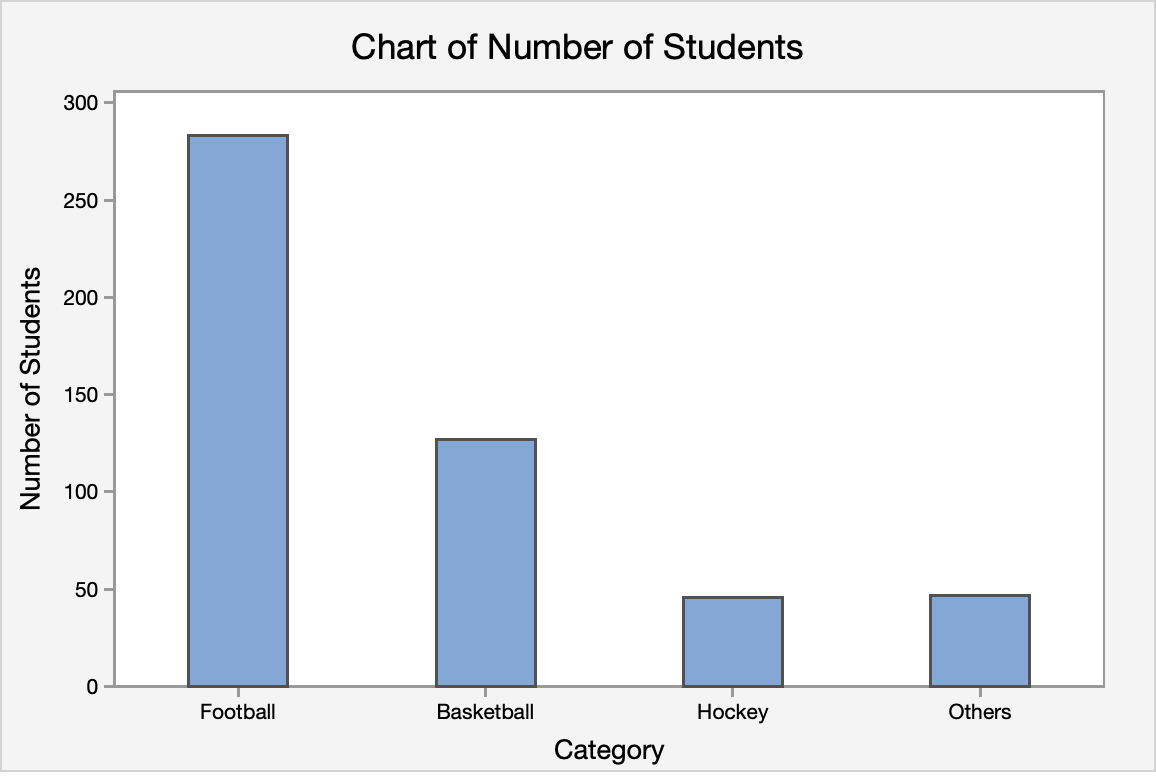1.2 - Summarizing Categorical Data
1.2 - Summarizing Categorical DataOnce the type of data, categorical or quantitative is identified, we can consider graphical representations of the data, which would be helpful for Maria to understand.
Frequency tables, pie charts, and bar charts are the most appropriate graphical displays for categorical variables. Below are a frequency table, a pie chart, and a bar graph for data concerning Mental Health Admission numbers.
- Frequency Table
-
A table containing the counts of how often each category occurs.
Diagnosis Count Percent Depression 40835 48.5% Anxiety 29388 34.9% OCD 5465 6.5% Abuse 8513 10.1% Total 84201 100.0%
- Pie chart
-
Graphical representation for categorical data in which a circle is partitioned into “slices” on the basis of the proportions of each category.
Pie Chart of Diagnosis
Pitfalls
One of the pitfalls of a pie chart is that if the “slices” only represent percentages the reader does not know how many actual people fall in each category.- Bar chart
-
Graphical representation for categorical data in which vertical (or sometimes horizontal) bars are used to depict the number of experimental units in each category; bars are separated by space.

Penn State Fall 2017 Undergraduate Enrollments
Pitfalls
[Add pitfalls]Tips
Pie charts tend to work best when there are only a few categories. If a variable has many categories, a pie chart may be more difficult to read. In those cases, a frequency table or bar chart may be more appropriate.
When selecting a visual display for your data you should first determine how many variables you are going to display and whether they are categorical or quantitative. Then, you should think about what you are trying to communicate. Each visual display has its own strengths and weaknesses. When first starting out, you may need to make a few different types of displays to determine which best communicates your data.
1.2.1 - Minitab: Summarizing Categorical Data
1.2.1 - Minitab: Summarizing Categorical DataMinitab® – Summarize Categorical Data
Steps for Creating a Pie Chart
- In Minitab choose Graph> Pie Chart.
- Choose one of the following, depending on the format of your data:
- In Category names, enter the column of categorical data that defines the groups.
- In Summary values, enter the column of summary data that you want to graph.
- Choose OK.
Steps for Creating a Bar Chart
- In Minitab choose Graph> Bar Chart.
- Choose one of the following, depending on the format of your data:
- Counts of unique values (This is the best option). Choose Simple for the graph type.
- A function of a variable
- Values from a table
- Choose OK.
Try it!

